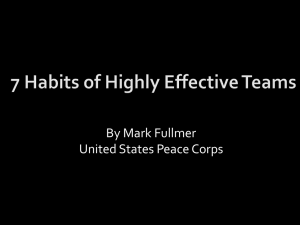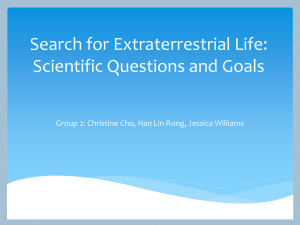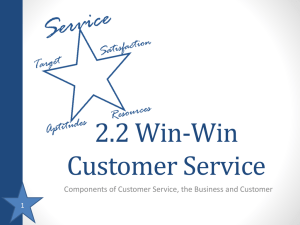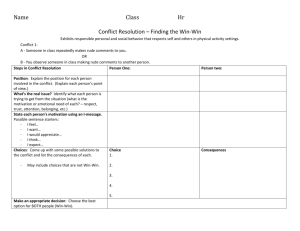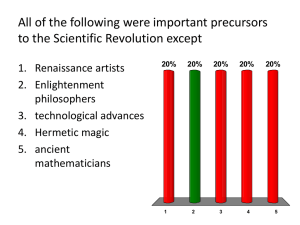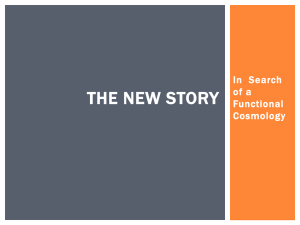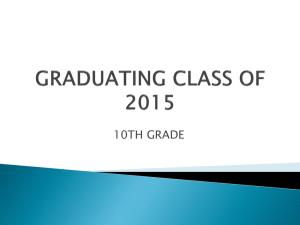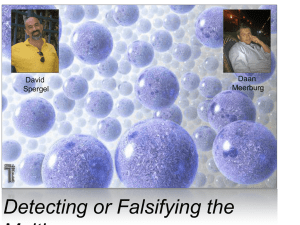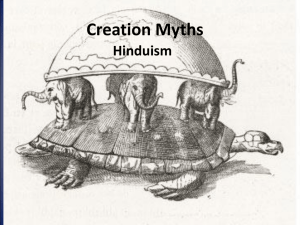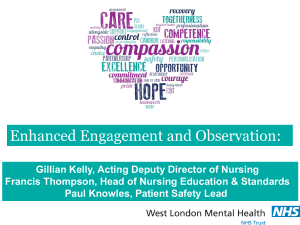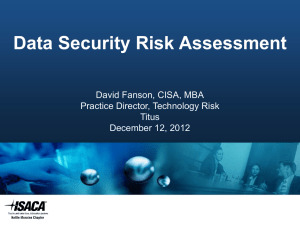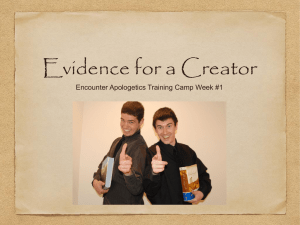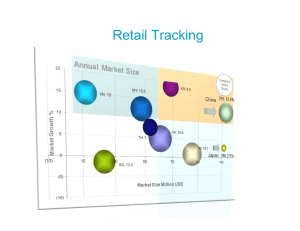Comparative International Data on Higher Education
advertisement
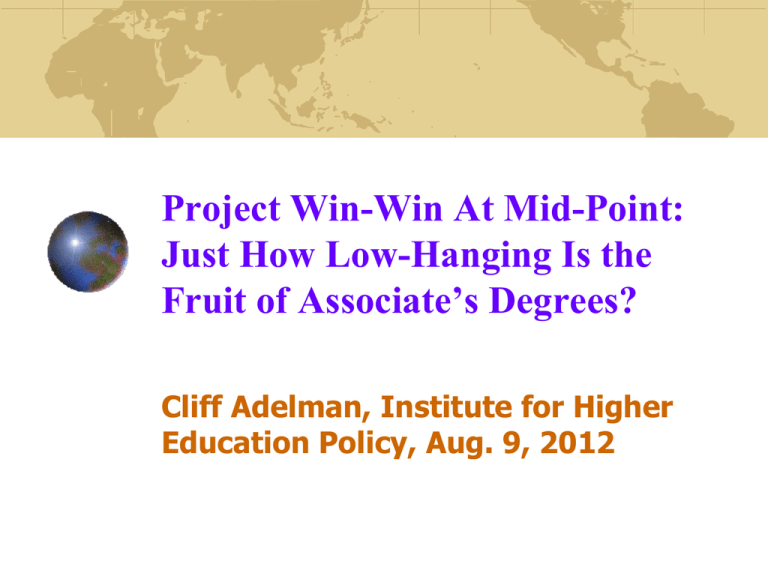
Project Win-Win At Mid-Point: Just How Low-Hanging Is the Fruit of Associate’s Degrees? Cliff Adelman, Institute for Higher Education Policy, Aug. 9, 2012 My labels for this search Finding the eligibles: the unrecognized attainment of community college students. Most people think degrees just happen--they don’t! You get what we call Project Win-Win (one for the institution; one for the student). Does it work? Here are those who are trying under Win-Win Phase States Community Colleges Pilot 9/09 – 5/10 Louisiana, New York, Ohio 6 3 Expansion I 9/10 – 8/13 Louisiana, Missouri, New York, Ohio, Virginia, Wisconsin 21 (includes Pilot institutions) 12 (includes Pilot institutions) Expansion II 9/11 – 8/13 Florida, Oregon, Michigan 29 4-year Instits. 0 Can you do this, too? Ask your data base for all students who: Were not enrolled in 2011/2012 Initial enrollment at any time after 2002. Cachement period a minimum of 7.5 years. Initial enrollment can be transfer-in (41% in in 55 reporting institutions). threshold Credits (60-64). Ave. transfer-in credits in 55 reporting institutions= 39. GPA threshold: whatever is required for graduation No Associate’s earned from institution; no certificates, either. This is the “universe of interest.” It totals 130k in the 62 Win-Win institutions. You would be surprised as to how many schools cannot do this because: They have never asked this basic tracking question; Their data systems do not contain basic variables necessary for the definition of the universe; They changed data systems and have yet to reconcile old and new. Central state agencies in Florida and Oregon are defining the Universe of Interest for the participating institutions, and even they had problems enough to re-do the data 2 and 3 times. You then match with state and NSC data. What happens? Duplicate counts when students attend more than two institutions in-state. State has recorded degrees from inquiring institutions and the institution does not. Half of the schools skip the state data match because the state data are awful, do not include private institutions, and the agency works with the speed of a turtle in February. NSC is much better. How far did this get us? How far will it get you? 36% of the Universe of Interest remained after both matchings, along with a very inconsistent set of local exclusions. Local exclusions (residency, degree “holds,” specific courses) should have been held until after Degree Audit; This phase of this process will knock out nearly 2/3rds of your universe of interest! 3rd Step: the Degree Audit Despite credits, GPA, etc., did they really qualify? Some institutions have developed software with degree templates; most do not have such aids. So you get hand-and-eye readings. These average about 10-15 minutes per case. The range is 5 -25 minutes. Off-the-shelf products included SCT On-Course, CAPP (Sunguard), Degree Works, DARS, and local productions. But you get hand-and-eye even after an automated audit, i.e. the software does not pick up nuance. You can read based on the student’s declared major or with the template of the default transfer degree. In general, the degree requirements are those currently in effect, but you must decide which catalogue is in effect for each student. You begin to smell the problems that can turn up. So what have 34 reporting institutions come up with after Degree Audit? 4250 “eligibles” 13740 “potentials” 7600 neither That’s out of 44,900 in the starting bin for these schools. And Some of this is in progress, and these numbers keep changing. The key blockage point: institutional degree award policy Opt-in only: 67% Opt-out only: 27% Institutional Override 6% Translation into real data: 2683 of the 4253 “eligibles” (63%) have been awarded degrees to date. Then there are the “potentials,” who everybody thinks will return to school to finish Some of them have returned while you were working through Some of them (so far, 1100) can’t be found A third are missing college-level math, and are not very promising returns And things called “life” get in the way. The content and method of the contact process is critical in this effort. Regardless of your take, these are your students Your degrees; And you cannot tolerate even 10 % of those who initially look eligible walking around the country empty-handed; We estimate 100,000 “eligibles” across 1200 community colleges. So are you ready to pick more lowhanging fruit?

